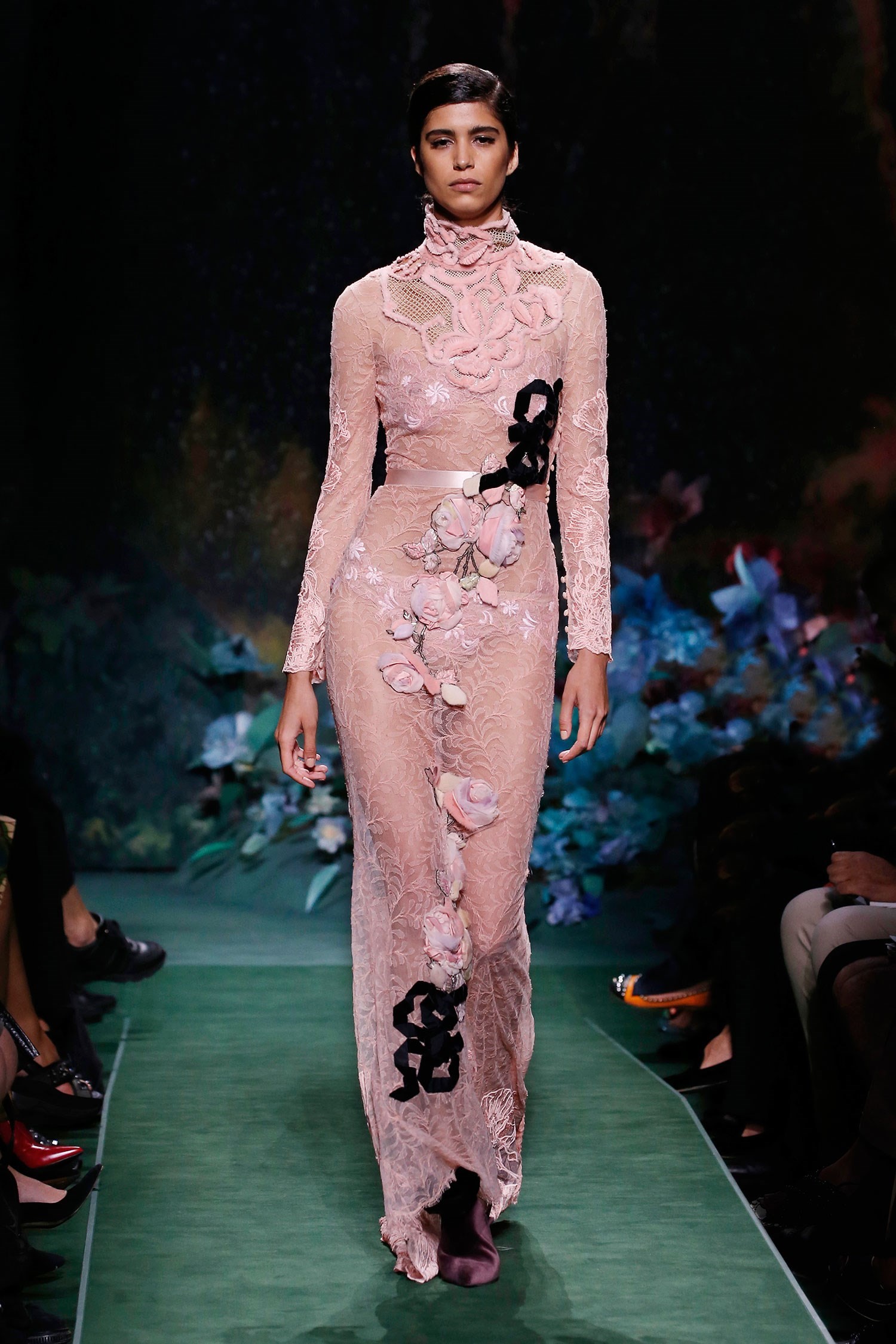There’s always something magical about haute couture. “It’s the impossibility of haute couture,” was the phrase once urgently muttered to me by Lady Amanda Harlech, right-hand woman to Karl Lagerfeld both at Chanel and Fendi. What she means is that haute couture achieves things that nary seem possible, like sewing minute caviar beads into rows to resemble grosgrain, or stitching dresses with (actual) feathers instead of thread, the whole thing unravelling in that fabulous style the French dub dégagé – casual, when it’s actually anything but.
Karl Lagerfeld is the only designer who gets to make magic twice within one haute couture season; each July, he creates couture not only for Chanel but for Fendi, where he’s the world’s longest-serving creative director (52 years and counting) and where, to commemorate his 50th year at the helm, Lagerfeld relaunched an ‘haute fourrure’ line in 2015. There’s a subtle differentiation – whereas haute couture translates as high sewing or needlework, haute fourrure is all about fur, albeit fur pushed to its highest level. What that means is a combination of the priciest pelts (the first collection featured a sable plated with pure silver, with a million euro tag) and the most painstaking workmanship. As Harlech said, it’s about creating the impossible.


What was impossible in this Fendi collection? How about the fact that anything that didn’t look like fur was actually fur? Fendi sliced and diced and punched and embroidered fur to resemble lace; it embedded cobalt-dyed sable (itself, a first) into forests of peat-coloured astrakhan like imaginary blooms; it recreated pointillist painting with thousands of petals of shaved mink. Shaved mink, indeed, was something of a material of choice – dyed a myriad of colours and used to create sinuous, velvety gowns, gathered into fantastical blooms and adding a three-dimensional quality to foliate lace-look leather. The hours of work soared into the hundreds of thousands – the amount of time taken to embed fur like dandelion fluff into sheer gowns, making the whole look effervescent and almost accidental.


The technical prowess was extraordinary; but the theme was simple. Fairytales, which surrendered a hand-painted scrim as a backdrop on the stage of the Théâtre des Champs-Élysées, conjuring an enchanted woodland scene. That wound up echoed on the clothes, in those fantasy lace landscapes, those blooming fur flowers, those shaven havens of mink. How fitting, given the magical impossibility only possible with couture.
Call it a furrytale. Of course, it had a happy ending. Namely, a cocktail party to hurrah out the haute couture season, and a throng of moneyed clients who first of all packed the rafters of the theatre, and then flooded into the lobby to inspect pieces up close, and place their orders to look like furry fairytale princesses come the cold spell.
